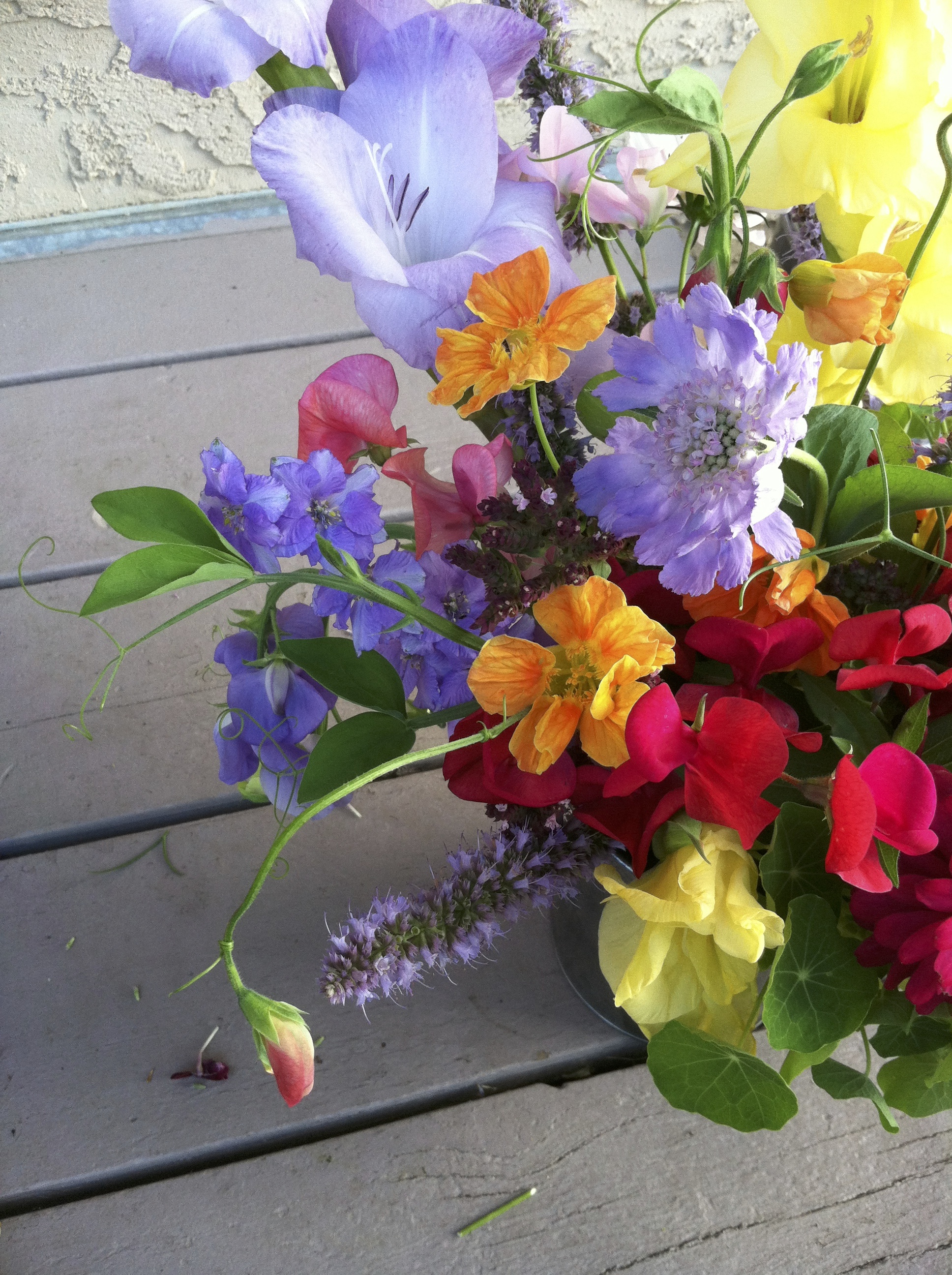As I’ve been starting my sweet peas and other flowers from seed, I’ve been imagining who will end up with these blossoms. It’s always someone drawn by their fragrance. The scent of sweet peas reminds me of childhood summers and the butterfly kisses you get from the petals when you bury your face in a bunch. Perhaps you might be reminded of your grandmother, or a trip to an English walled garden. Sweet peas are undoubtedly a special flower.
Sweet peas are one of the few popular cut flowers that still reward you with scent. It amazes me that when people receive flowers the first thing they do is smell them, despite the fact that most cut flowers have had any fragrance bred out of them. Now that’s an ingrained association!
A beautiful bunch of garden roses with a rich fragrance and the most beautifully shaped petals.
Plant breeders have long worked to remove scent from flowers because it reduces vase life. The more energy the flower has to put into producing scent, the less goes into prolonging the bloom. Thus, we see wild or garden roses have incredibly rich scents but last only a few days, while the typical roses you buy by the dozen in the supermarket or receive in floral arrangements smell like a flower shop (that weird combination of chemicals, dying plant matter, and a hint of something spicy (usually carnations)). Even sweet peas have undergone this hybridization – you can get bunches from Europe or Japan with exceptionally long stems and long lasting flowers but little to no scent.
What I find fascinating is that the current cut flower trade arose largely from a desire for scent, not for longevity or colour, as is emphasized today. ‘Nosegays’ (small bunches) of violets, a rather humble looking flower, were brought in fresh each morning from farms and sold on the street for their scent alone. As the floral trade went global, the demands on flowers have increased, devaluing scent and now requiring straight, long stems, uniformity of colour, tolerance of dry shipping, resistance to fungus and disease, and, above all else, longevity. These traits ensure that most of the time product is arriving on time, in good condition, and is exactly what the customer expected; they increase efficiency and everyone’s bottom line, from growers to wholesalers to florists.
Lilac, little daffodils and even the spiraea used in this arrangement all smell delicious and scream spring but rarely last a week once cut
Whether these traits increase YOUR bottom line is a personal choice. When I design flowers, I’m motivated by a desire to provide a richly detailed sensory experience, a unique work of art, albeit a temporary one, just as someone who designs fantastic wedding cakes or delicate multilayered pastries might be. I don’t mind incorporating flowers that will die in a few days, because I’m willing to sacrifice longevity for a more natural look and feel. When you choose flowers, maybe it’s colour or a dramatic bloom that helps you decide, but you are also making choices and tradeoffs about other traits you value in flowers – whether that be fragrance, locally grown, or long lasting.
The role of a floral designer is to share their expertise to help you make that decision. For a wedding, flowers only need to look perfect for the day of the event so you might be more willing to go all out when it comes to bodacious peonies and dahlias, scented garden roses and sweet peas, and every shade of zinnia, things that don’t always last that long in the vase. Whereas if you are buying flowers for a reception desk you might want something that lasts at least a week and needs minimal care, like bright sunflowers and tulips, or a beautiful stem of amaryllis.
For the most part, there is a flower out there for everyone. But scented sweet peas, sweet peas from my garden - those are only for the romantics.
Sweet peas growing in the garden




